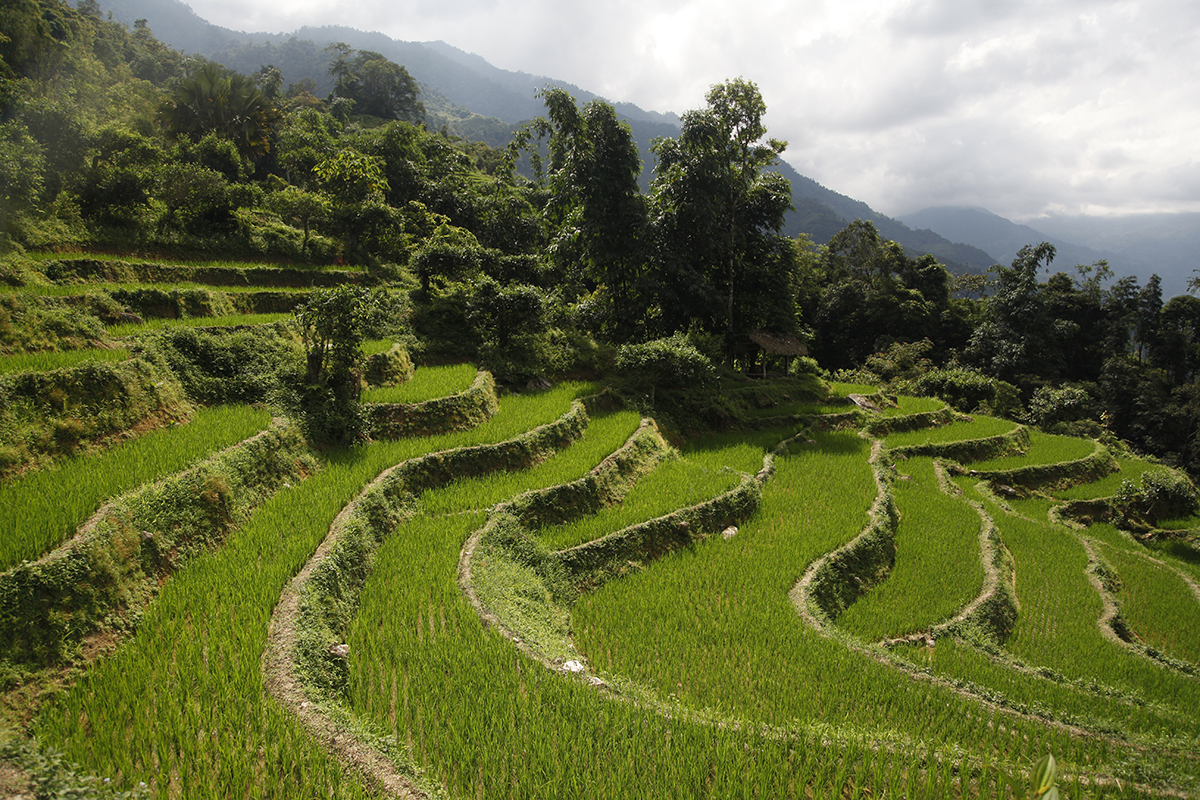Tea and rice have a lot in common. Firstly their shades of green, with the occasional touch of yellow, so delicate and varied, so intense. A feast for the eyes. I could spend my life photographing paddy fields. I often walk around them, carefully, placing one foot in front of the other along the low wall that surrounds them, in order to reach tea plantations that are even higher up the mountain, like here, in northern Vietnam. Some tea gardens have no road leading to them, so you set out on the sinuous path of the paddy fields. At least here it’s not steep, because rice grows on flat ground, either in fields or on terraces. Rice, unlike tea, needs stagnant water. Tea needs plenty of water too, but the water must be free-flowing, not sitting around its roots. That’s why tea likes slopes, while rice likes flat land. Flat versus slope, valley versus mountain, stagnant water versus flowing water; tea and rice are like two brothers who are completely opposite yet inseparable. They’re always together. They have another important human characteristic: of all agricultural products, these two crops employ the greatest number of people in the world. (To be continued.)
Tea and rice
19 August 2016





